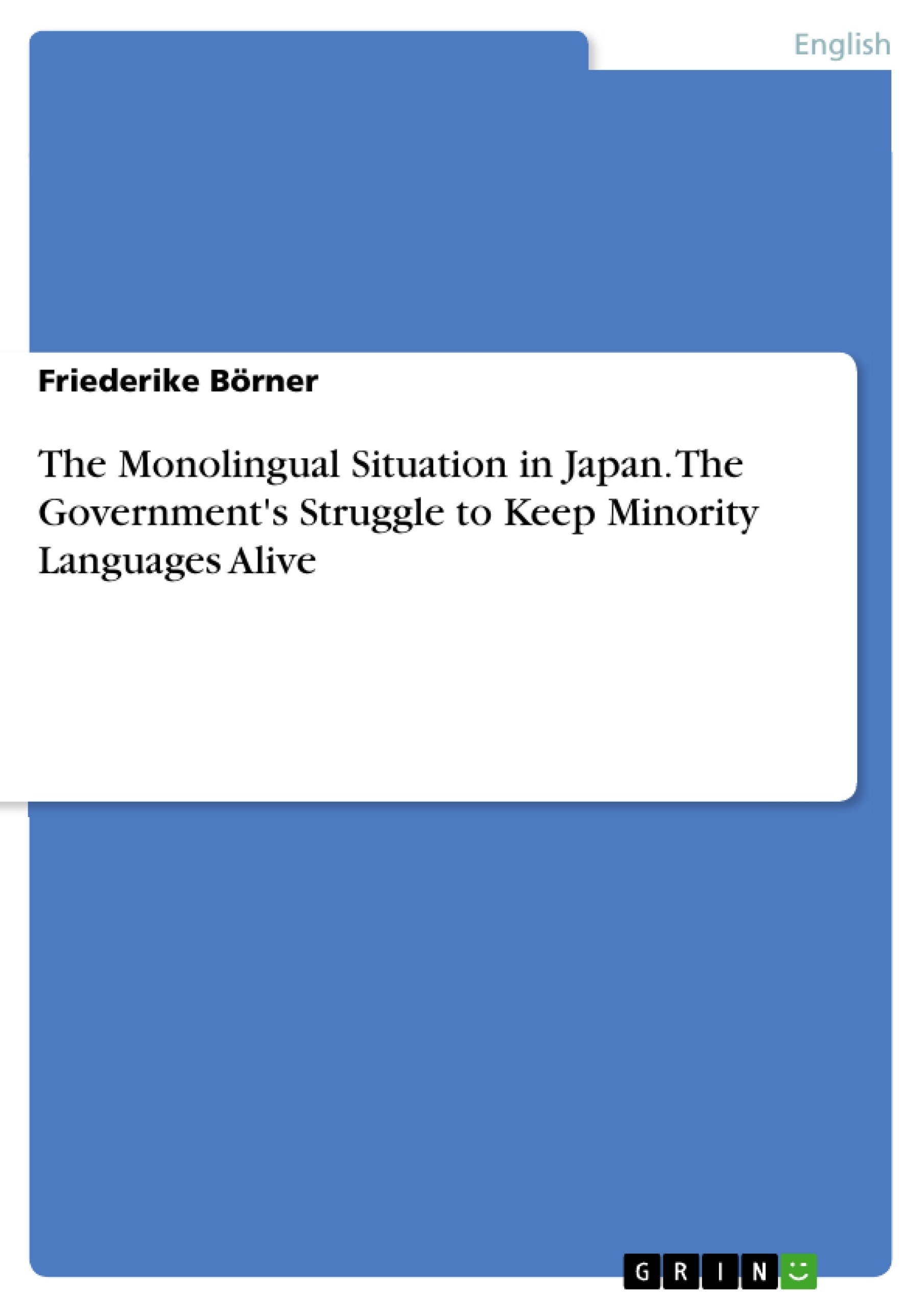In this paper I want to give a short introduction to the language varieties in Japan and I want to talk about the struggle with minority languages in the country. When talking about minority languages I will especially refer to the Ainu language, the indigenous language of Japan.
The Japanese language is spoken by 127 Million people and ranks on the 9th place of the most frequent spoken languages. However, Japanese is not a universal language, since most of the people are native speakers and the center of the Japanese language is Japan. Nowadays it is spoken on the 4 main islands of Japan – Hokkaido, Honshu, Shikoku and Kyushu.
Japanese can be also found in the former colonized parts of Japan – in Korea, Taiwan, Sakhalin, in some parts of China, in Hawaii and even Brazil. For Western people Japanese seems very exotic and difficult to learn, especially the writing and reading of the Japanese language is a struggle for every language learner from a Western country. It consist of the Hiragana and Katakana syllabary and the Chinese characters called Kanji.
Although we can find Chinese characters in Japanese, both languages have totally different lexis and grammar. The Chinese characters were brought to Japan in the year 300 and developed by the Japanese people to fit their own language system. There are controversies about if Japanese is an Altaic language or a malayoaustronesian language. Since Linguists cannot find a certain genealogical relationship to another language, Japanese is considered as a Japonic language and can still not be clearly defined by today.
Inhaltsverzeichnis (Table of Contents)
- Aim and Structure of the paper - Why did I choose this topic?
- What is the actual language situation of Japan? Which minority groups do exist in Japan?
- Japanese as the national language of Japan
- The Ainu language
- Ryūkyū-languages
- Other languages
- What is done to keep minority languages in Japan alive?
- Reasons for the dying out of minority languages in Japan
- What is done by the government and private institutions to keep minority languages in Japan alive?
- Conclusion and Outlook
Zielsetzung und Themenschwerpunkte (Objectives and Key Themes)
This paper aims to provide an overview of the language situation in Japan, focusing on the challenges faced by minority languages. It examines the historical and social factors contributing to the decline of these languages and explores the efforts made by the government and private institutions to preserve them.
- The status of Japanese as the national language and its impact on minority languages
- The historical and socio-cultural factors contributing to the decline of minority languages in Japan
- The efforts made by the government and private institutions to revitalize minority languages
- The importance of language preservation for cultural diversity and heritage
- The role of language in shaping identity and social inclusion
Zusammenfassung der Kapitel (Chapter Summaries)
The first chapter introduces the topic of the paper and explains the author's interest in the language situation in Japan. It also provides a brief overview of the Japanese language and its history. The second chapter focuses on the language situation in Japan, discussing the status of Japanese as the national language and outlining the main minority languages, including the Ainu, Ryūkyū, and Korean languages. The third chapter explores the reasons for the decline of minority languages in Japan and examines the efforts made by the government and private institutions to preserve them.
Schlüsselwörter (Keywords)
The key themes and concepts explored in this paper include minority languages, language revitalization, language endangerment, cultural diversity, social inclusion, Ainu language, Ryūkyū languages, Japanese language, and language policy.
- Quote paper
- Friederike Börner (Author), 2012, The Monolingual Situation in Japan. The Government's Struggle to Keep Minority Languages Alive, Munich, GRIN Verlag, https://www.grin.com/document/321155



